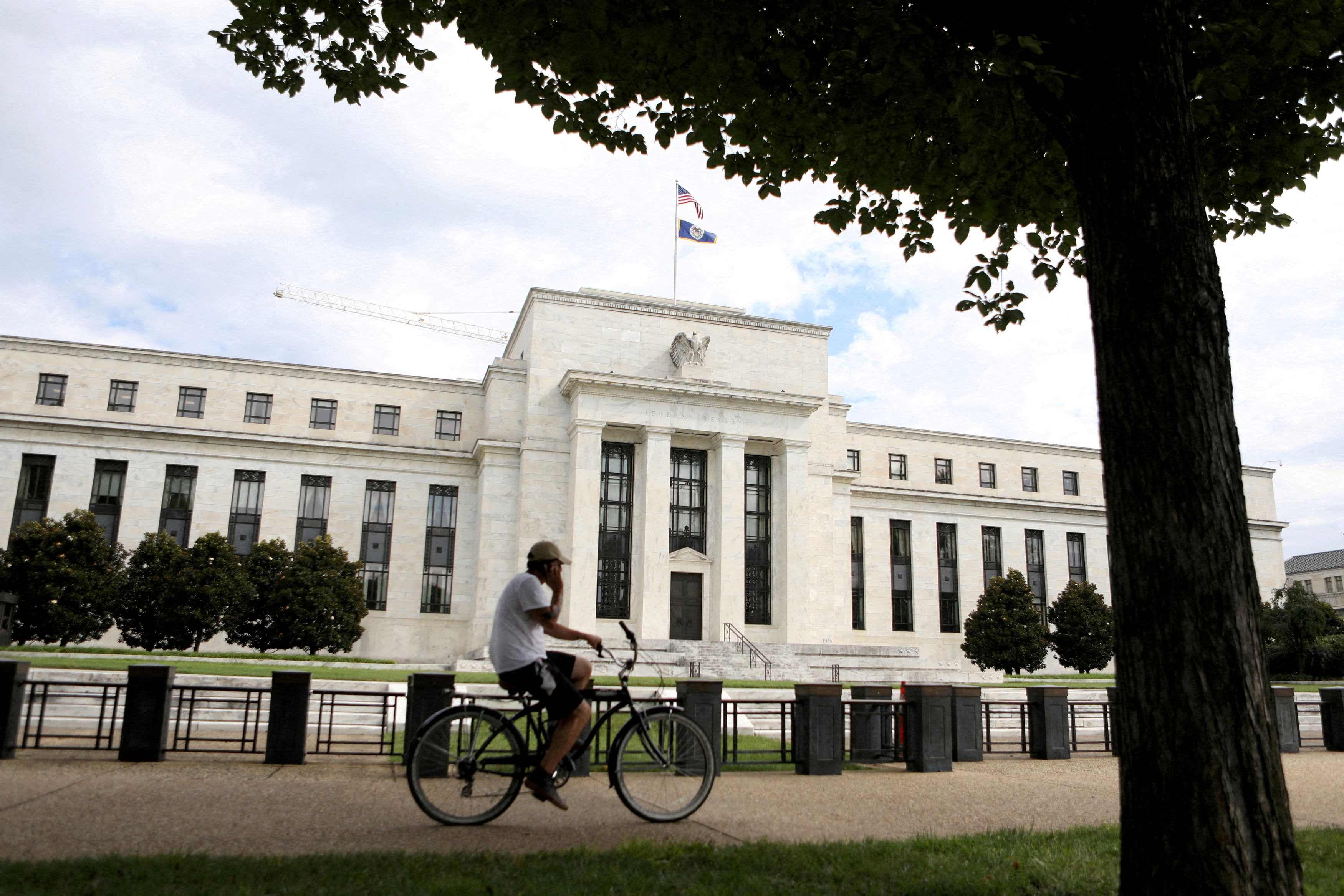
- Paul Gambles, managing partner at MBMG, said the Fed is behind the curve when it comes to cutting interest rates.
- Traders are now pricing in a 25 basis point cut as early as March 2024.
- Veteran investor David Roche says “it’s almost certain that the Fed is done raising interest rates,” and that inflation won’t drop to 2% anymore.
The Federal Reserve needs to cut interest rates at least five times next year to avoid pushing the U.S. economy into recession, according to portfolio manager Paul Gambles.
Gambles, co-founder and managing partner at MBMG, told CNBC’s “Squawk Box Asia” that the Fed was behind the curve on interest rate cuts, and in order to avoid a severe and prolonged monetary tightening cycle, it would have to deliver at least five cuts in… 2024 alone.
“I think Fed policy now is so disconnected from economic factors and from reality that you can’t make any assumptions about when the Fed is going to wake up and start smelling how much damage it’s actually causing the economy,” Gambels warned.
The current interest rate in the United States ranges between 5.25% and 5.50%, which is the highest in 22 years. Traders are now pricing in a 25 basis point cut as early as March 2024, according to CME FedWatch tool.
Federal Reserve Chair Jerome Powell said on Friday it was too early to declare victory over inflation, dampening market expectations for interest rate cuts next year.
“It would be premature to conclude with confidence that we have achieved a sufficiently restrictive stance, or to speculate about when the policy will be eased,” Powell said in prepared remarks.
Recent data from the US suggested an easing of price pressures, but Powell stressed that policymakers plan to “keep policy restrained” until they are satisfied that inflation is firmly on track to the central bank’s 2% target.
However, his comments were viewed as dovish by financial markets, sending Wall Street’s main indexes to new highs and Treasury yields falling sharply on Friday. The perception now is that the US central bank is effectively done raising interest rates.
US consumer prices were unchanged in October from the previous month, raising hopes that the Federal Reserve’s aggressive interest rate hike cycle has begun to bring down inflation.
The Labor Department’s Consumer Price Index, which measures a broad basket of commonly used goods and services, rose 3.2% in October from a year earlier but remained flat from the previous month.
Veteran investor David Roche told CNBC’s “Squawk Box Asia” that unless there are significant external shocks to U.S. inflation in the form of energy or food, the Fed is “almost certainly” done raising interest rates, which It also means the next move for interest rates. It will be down.
“I’ll stick with 3%, which I think is already reflected in many asset prices. I don’t think we’re going to push inflation down to 2% anymore. It’s embedded in the economy in all sorts of things.” Roche, President and Global Strategist at Independent Strategy, said:
“Central banks don’t have to fight as hard as they did before,” said Roche, who correctly predicted the Asian crisis in 2008. “So the implied inflation rate will be higher than before, it will be 3% instead of 2%.” 1997 and the 2008 global financial crisis.
It now remains to be seen what the Fed’s plans are on interest rates at its next and final meeting of the year on December 13. Most market players expect the central bank to leave interest rates unchanged.

“Web maven. Infuriatingly humble beer geek. Bacon fanatic. Typical creator. Music expert.”





More Stories
Bank of Japan decision, China PMI, Samsung earnings
Dow Jones Futures: Microsoft, MetaEngs Outperform; Robinhood Dives, Cryptocurrency Plays Slip
Strategist explains why investors should buy Mag 7 ‘now’